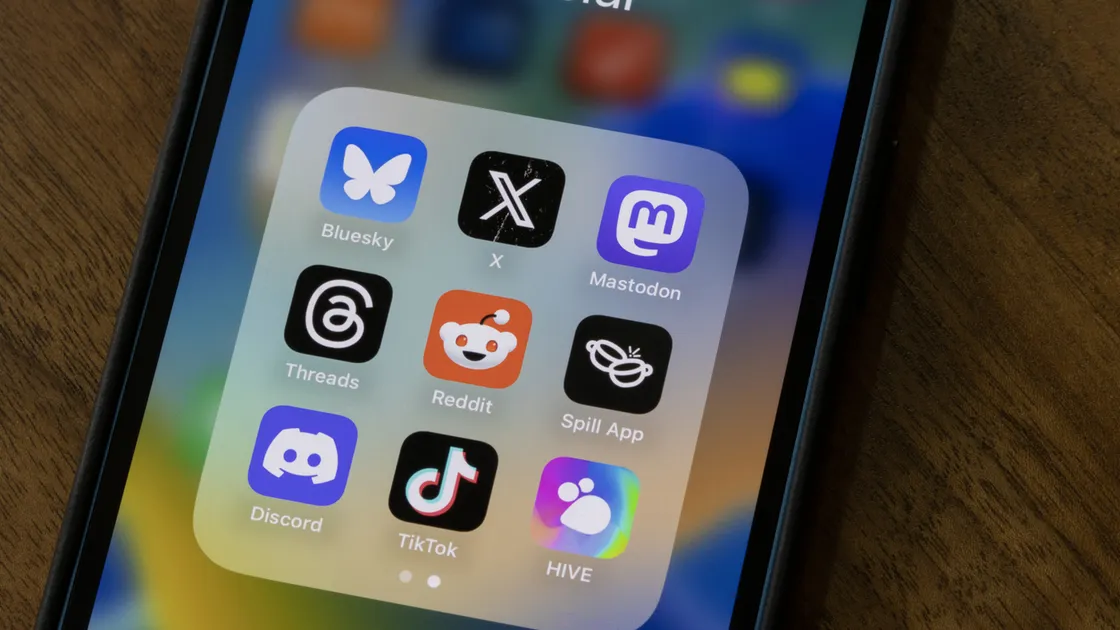How to Succeed with Influencer Marketing in Japan

For overseas brands entering Japan, the biggest hurdle is clear: how to embed your product or service in the daily lives of Japanese consumers. Traditional channels—TV commercials and print—often fail to reach the right audience, delivering limited impact.
In today’s market, skipping influencer marketing means you won’t stand out—and you may even get lost in the competitive noise. Japanese consumers are influenced less by ads and more by recommendations from people they trust. Social-media creators act as the bridge that transfers that trust to brands.
Ignore this shift, and your product may fade away before it’s even discovered. Partner with the right creators, and you can rapidly build awareness and drive purchase behavior in a short time.
This article explains why influencer marketing in Japan is essential, the benefits you can expect, the risks to watch for, real-world wins and missteps, and a practical roadmap for execution. We also outline why leveraging an expert agency can be a critical factor for overseas companies aiming to succeed in Japan.
Consumer Behavior and Social Media in Japan

For overseas brands, influencer marketing in Japan represents a significant opportunity. Japanese consumers frequently discover products and services through social media, and they are highly responsive to recommendations from people they trust. With the right strategy, it is entirely possible to build awareness quickly and establish a lasting brand presence.
At the same time, Japan is not a straightforward market. Simply importing Western methods rarely delivers results. Without understanding local culture and consumer behavior, even substantial investments can fail to generate returns.
To succeed, brands must first grasp the unique psychology of Japanese consumers and the specific ways they use social platforms. This foundation is essential for any marketing approach that hopes to resonate and drive results in Japan.
Japanese Consumers Value “Word of Mouth” and Trust
In Japan, consumers tend not to take advertisements at face value. Instead, they place strong emphasis on word of mouth and recommendations from people they trust. This mindset stems from a long cultural tradition of relying on reputation and introductions when choosing products and services.
Today, that tendency has shifted onto social media, where influencer posts play a central role. Unlike TV commercials, which push information one-way, influencer content is perceived as the personal experience of someone trusted. This makes it far more likely to influence purchase decisions.
Another key factor is the strong desire among Japanese consumers to “avoid mistakes.” The reassurance and credibility that come from trusted voices often determine whether or not a purchase is made. In fact, buying a product simply because a favorite celebrity or influencer recommended it is extremely common.
For brands, this means that success in Japan does not come from aggressive advertising but from building trust and communicating naturally through credible voices. These cultural and psychological factors explain why influencer marketing has become such a powerful tool in the Japanese market.
Mainstream Social Platforms in Japan and Generational Usage Trends
When executing influencer marketing in Japan, choosing the right social platform can make or break a campaign. Usage varies widely across age groups and purposes, making platform selection a critical step.
LINE is the most widely used service in Japan, spanning nearly all generations. However, it is primarily used for personal communication with family and friends, so it is less common for direct influencer campaigns.
Instagram and TikTok dominate among younger audiences. Instagram is especially popular with women in their 20s, making it highly effective in categories like fashion and beauty. TikTok, with strong penetration among teens and people in their early 20s, is ideal for creating rapid buzz and short-term trends.
YouTube enjoys broad adoption across all age groups and is particularly effective for product reviews, tutorials, and other long-form content. Meanwhile, X (formerly Twitter) stands out for its real-time nature, making it effective for spreading news, event updates, and live conversations.
In short, each platform in Japan serves a distinct role. To succeed, brands must carefully match their choice of platform with the target audience and campaign objectives.
Different from Western Markets: Engagement Over Follower Count
In many overseas markets, an influencer’s power is often judged by the size of their follower base. In Japan, however, follower numbers alone rarely guarantee results. What matters more is the depth of engagement—whether influencers interact with their followers regularly and foster active conversations through comments and reactions.
This emphasis reflects a cultural preference in Japan: consumers value the opinions of trusted individuals over mass messaging. As a result, close connections within specific communities tend to drive purchases more effectively than broad but impersonal reach.
Micro-influencers—those with follower counts in the tens of thousands—can hold significant sway in their niches. By contrast, even celebrities or public figures with millions of followers may not always convert into sales, especially if their promotions feel overly commercial. In Japan, messages perceived as too “advertising-driven” can actually damage trust.
For brands entering this market, success depends on looking beyond follower numbers. Prioritizing influencers with strong relationships and high engagement within the target audience is the real key to effective influencer marketing in Japan.
The Benefits of Leveraging Influencers in Japan

In Japan, the role of influencers in marketing has grown increasingly vital. Traditional advertising alone often struggles to move consumers, while influencers serve as a trusted source of information that bridges the gap between brands and audiences.
Japanese consumers, in particular, place high value on recommendations from trusted figures or people they feel close to. This cultural trait makes influencer content feel more natural, more credible, and more likely to drive purchase behavior.
Niche influencers who specialize in specific categories can wield strong influence within their communities. This means that even with limited budgets, brands can efficiently reach the right audience segments through the right creators.
In this way, influencer marketing in Japan goes far beyond generating buzz. It is a highly effective method for building trust and directly boosting sales. In the following sections, we will take a closer look at the concrete advantages it offers.
Building Awareness Through Trust
Japanese consumers tend to value the opinions of trusted individuals over direct corporate advertising. As a result, influencer content is not perceived as mere promotion but rather as a personal recommendation from someone relatable.
For example, when a new cosmetic or food product launches, consumers are often more influenced by a trusted influencer’s post—sharing that they “tried it and loved it”—than by an official ad campaign. Because this type of message feels approachable and authentic, it naturally encourages consumers to move toward purchase.
In this sense, influencers act as mediators of trust between brands and consumers. Instead of pushing messages in a traditional advertising style, they convey information in a way that feels credible and personal. This ability to spread products and services based on trust is one of the key reasons why influencer marketing is so effective in the Japanese market.
Reaching Deep into Specific Niches and Communities
One of the core strengths of influencers is their ability to connect deeply with specific niches and communities. Japanese social media users actively follow accounts that match their personal interests, which means influencer audiences often form tightly knit communities with shared passions.
For instance, followers of a beauty influencer are highly engaged with cosmetics and skincare, while fans of a gaming creator are deeply invested in particular game genres. Introducing a product or service within these communities allows brands to target audiences with precision—reaching those who already have a high level of interest, rather than broadcasting broadly and superficially as traditional ads often do.
By speaking directly to communities centered around specific themes, influencer marketing taps into consumers with strong purchase intent. This makes campaigns more efficient and results-driven. It’s a unique advantage that influencer marketing offers over mass advertising in the Japanese market.
Higher Cost Efficiency Compared to Traditional Advertising
One of the major advantages of using influencers in Japan is the superior cost-effectiveness they offer. Traditional TV commercials and magazine ads require significant investment, yet they don’t always reach the intended audience.
By contrast, influencer campaigns can directly target the right consumer segments, allowing brands to achieve meaningful results even with limited budgets. In particular, micro-influencers—who may not have massive followings but maintain high engagement—can deliver a strong impact at relatively low cost.
Because of their close relationships with followers, the products and services they promote are more likely to be perceived as genuine recommendations. This makes the path from awareness to purchase more seamless and natural.
For overseas companies seeking to “maximize results while keeping costs under control,” influencer marketing presents a highly effective option. In fact, for brands prioritizing cost performance in Japan, focusing on influencer initiatives is often a more rational choice than investing in traditional advertising.
Challenges and Risks to Watch Out For

Influencer marketing holds tremendous potential to deliver strong results in Japan. When executed well, it can shorten the distance between brands and consumers, foster trust-based communication, and often outperform traditional advertising in impact. For overseas companies, it represents an efficient pathway to gaining traction in the Japanese market.
However, the road to that success is far from simple. Choosing the wrong influencers or approaching campaigns with the wrong strategy can lead not only to disappointing results but also to reputational damage for the brand.
In the following section, we will outline the key challenges and risks that companies must keep in mind when implementing influencer marketing in Japan.
The Challenge of Identifying the Right Influencers
One of the biggest hurdles in executing influencer marketing in Japan is selecting the right influencers. A large follower count does not necessarily translate into effectiveness. If the influencer’s values and messaging do not align with the brand, the expected results will not materialize.
For overseas companies, this challenge is compounded by language barriers. Subtle nuances in influencer posts and everyday communication can be difficult to interpret correctly. On the surface, an influencer may appear popular, yet their connection with followers may be weak, or their audience may not align with the brand’s target demographic.
Moreover, Japanese consumers are highly sensitive to posts that feel overly commercial. Choosing the wrong influencer risks making a campaign appear as “forced promotion,” potentially damaging brand reputation.
This is why influencer selection in Japan requires more than looking at surface-level numbers. Consistency of messaging, the strength of relationships with followers, and the overall fit with brand values must all be carefully assessed to ensure success.
Communication Gaps from Language and Cultural Differences
When overseas companies run influencer marketing campaigns in Japan, one of the biggest challenges lies in communication gaps caused by language and cultural differences. Even if a campaign’s intent and brand message are carefully translated into Japanese, the way they are received can shift due to cultural context or subtle nuances lost in translation.
For example, expressions that sound positive and persuasive in Western markets may feel overly pushy or unnatural in Japan. Similarly, when influencers interpret and share content in their own way, the brand’s intended nuance can sometimes be diluted or misrepresented.
Such mismatches can cause campaigns to come across as awkward or inauthentic, ultimately preventing them from achieving the desired impact.
To avoid this risk, simple translation is not enough. Brands must invest in true localization that reflects Japan’s cultural background and maintain clear, thoughtful communication with influencers. Overcoming the barriers of language and culture is often the decisive factor in achieving success in the Japanese market.
The Risk of Backlash and Brand Damage
Japanese consumers are highly sensitive to both brand and influencer behavior, and social media provides an environment where inappropriate remarks or past controversies can spread rapidly. As a result, choosing the wrong influencer can expose a brand to reputational harm and loss of trust.
Even highly popular influencers may pose risks if they have a history of problematic statements or prior scandals. In such cases, criticism often extends beyond the influencer to the sponsoring company itself. Moreover, Japanese social media users closely scrutinize how brands respond when issues arise—mishandling a situation can damage the company’s overall image.
Another point of caution is that overly promotional content can easily backfire in Japan. If consumers perceive a campaign as blatant advertising, it can trigger rejection rather than engagement, leading to negative reactions instead of positive buzz.
In short, influencer marketing in Japan carries significant upside but also comes with the constant risk of backlash and brand damage. To mitigate these risks, brands must conduct thorough due diligence before partnering with influencers and establish clear crisis management protocols in advance.
Learning from Successes and Failures

Influencer marketing in Japan carries enormous potential for success. At the same time, if executed poorly, it can jeopardize consumer trust and damage a brand’s reputation. In other words, the outcome depends heavily on how the strategy is carried out.
This is why past cases of both success and failure provide valuable insights. By looking back at real examples, brands can better understand which approaches win consumer support—and which missteps provoke backlash.
In the following section, we’ll explore representative examples of successful and unsuccessful influencer campaigns in Japan, and outline the key lessons that can be learned from each.
Success Story: Tokyo DisneySea’s Influencer Campaign that Sparked Empathy
In 2016, Tokyo DisneySea launched a promotion for its Summer 5 Weekday Passport by partnering with Naomi Watanabe, one of Instagram’s most popular personalities in Japan.
On her own account, she shared a post with the hashtag #夏5でやってみた (“Tried it with Summer 5”)、 which resonated strongly with her followers. The post attracted nearly 398,000 likes, generating significant buzz across social media and positioning the campaign as a major success.
source : Instagram|@watanabenaomi703
One of the key reasons this campaign succeeded was the strong alignment between the brand and the influencer. Naomi Watanabe’s humorous, expressive personality naturally complemented the world of Tokyo DisneySea, allowing the collaboration to feel authentic and resonate with a wide audience.
In addition, the use of a simple hashtag made it easy for everyday users to join in, amplifying the campaign’s reach and boosting its overall PR impact.
This case highlights an important lesson for influencer marketing in Japan: success depends not only on follower count, but also on whether the influencer can genuinely reflect and enhance the brand’s appeal.
Failure Case: When Brand Image Was Damaged
In Japan, influencer marketing thrives on trust—but at the same time, even a slight misstep in messaging can carry significant risk.
A well-known example is Yuko Sugamoto, better known as “Yukosu,” a popular influencer who promoted her own cosmetics line on YouTube. During one video, she claimed that “Wi-Fi can also harm your skin,” a statement that quickly drew criticism for lacking scientific basis.
Although she promptly apologized, clarified it was a slip of the tongue, and deleted the video, the exaggerated claim sparked backlash and escalated into a reputational issue. This case illustrates how overly dramatic or misleading expressions, even when unintended, can undermine consumer trust and harm both the influencer and the brand.
source : X|@yukos_kawaii
This case underscores a vital lesson for brands entering the Japanese market: consumers are highly sensitive to exaggerated claims and expressions that could lead to misunderstanding. Messaging that feels overly promotional does not strengthen engagement—it often has the opposite effect, sparking criticism and eroding trust. The risk extends beyond harming a brand’s image; it can fundamentally undermine the credibility that influencer marketing is meant to build.
To avoid such pitfalls, companies must exercise extreme care in word choice and accuracy when working with influencers in Japan. Establishing a thorough review and approval process is essential to ensure that all content is clear, culturally appropriate, and free from misleading claims. By prioritizing precision and transparency, brands can protect their reputation while maximizing the effectiveness of influencer-driven campaigns.
Three Key Lessons from Case Studies
From the success and failure stories we’ve examined, one point becomes clear: in Japan, the outcome of influencer marketing depends heavily on who is chosen and how they communicate.
In the Tokyo DisneySea campaign with Naomi Watanabe, the strong alignment between brand and influencer allowed the message to feel natural and win widespread empathy. By contrast, in the case of Yukosu, a misleading expression undermined trust and escalated into backlash.
These examples highlight three essential lessons:
- Ensure that the brand’s world and the influencer’s persona are well aligned.
- Keep messaging accurate, avoiding exaggeration or expressions that could cause misunderstanding.
- Prioritize influencers who maintain trust and communicate responsibly, rather than focusing solely on follower numbers.
Because Japanese consumers are highly sensitive to overt advertising, building trust is the cornerstone of success. By contrasting successful and unsuccessful cases, brands can learn how to minimize risks and execute campaigns that truly resonate with the market.
Essential Steps for Overseas Brands to Succeed with Influencer Marketing in Japan

To succeed in influencer marketing in Japan, overseas companies cannot rely solely on intuition or past experience. Instead, it is crucial to follow a structured, step-by-step process at the practical level. Defining clear objectives, setting measurable success criteria, and carefully selecting the right influencers are all vital components of this flow.
By adhering to these steps, brands can reduce wasted effort and ensure their campaigns deliver tangible results. Skipping this process, on the other hand, risks falling short of expectations, squandering resources, or even damaging brand trust.
For overseas companies, mastering these “fundamental steps” is the most direct path to success in Japan. In the following section, we will break down the essential stages for executing effective influencer marketing in this market.
Define Objectives Before Designing the Campaign
The first and most important step in launching influencer marketing is to clearly define your objectives. Without a well-defined goal, decisions about influencer selection, content direction, and platform choice can become vague—leading to outcomes that fall short of expectations.
Broadly speaking, objectives can include raising brand awareness, driving specific actions such as purchases or sign-ups, or building a long-term brand image. The type of influencer you engage and the platforms you prioritize will vary depending on which goal takes precedence.
In Japan, where trust is a key driver of consumer behavior, objectives should go beyond short-term sales. Brands must carefully consider how they want to be discovered and what impressions they want to leave with consumers. This clarity forms the foundation for all subsequent campaign design and execution.
Set KPIs and ROI to Measure Results
Once objectives are defined, the next step is to establish metrics that will measure progress toward those goals. Here, two elements are particularly important: KPI and ROI.
KPIs (Key Performance Indicators) act as interim milestones to track the progress of a campaign. Examples include post impressions, engagement rate (likes and comments), or the number of times a campaign hashtag is used. By setting KPIs, brands can monitor whether initiatives are moving in line with expectations and make timely adjustments if needed.
ROI (Return on Investment), on the other hand, measures the profit generated relative to the cost of influencer marketing. It is a crucial metric for evaluating overall effectiveness. For example, if a company invests ¥100,000 and generates ¥300,000 in revenue, the ROI would be 200%, indicating a high cost efficiency.
In Japan, however, success is not judged by short-term numbers alone. Intangible outcomes—such as increased trust, stronger brand perception, and the growth of repeat customers—are equally critical. For this reason, brands should complement numerical indicators with long-term evaluations like improved brand understanding or loyalty. By doing so, they can gain a holistic view of both immediate impact and sustained value.
Select the Right Influencers
The success or failure of influencer marketing hinges largely on who you choose to partner with. A large follower count does not automatically guarantee effectiveness. What matters most is whether the influencer’s communication style and follower base align with the brand’s identity and the product’s characteristics.
In Japan, where trust is a key driver of consumer behavior, the depth of engagement and the strength of relationships with followers carry greater weight than raw numbers. For example, even micro-influencers with only tens of thousands of followers can wield significant influence if they have a passionate community in a specific niche. Their endorsements can drive not only awareness but also purchasing behavior.
It is also critical to review an influencer’s past content and activity history. Selecting someone with statements or controversies that conflict with brand values can put the company’s reputation at risk.
Ultimately, effective influencer selection in Japan is not about the size of influence but about three key factors: brand fit, trust with followers, and risk management. Prioritizing these elements is essential to achieving sustainable success.
Understand Cost Benchmarks and Allocate Budget Effectively
A clear understanding of cost benchmarks is essential when planning influencer marketing in Japan. Influencer fees vary widely depending on follower count, niche, and the type of content being produced.
For example, in the beauty sector on Instagram, even influencers with only tens of thousands of followers may command several hundred thousand yen per post. On platforms like YouTube, where video production requires filming and editing, costs tend to be even higher.
That said, success in Japan doesn’t always require hiring the most expensive influencers. In many cases, working with several micro-influencers who each hold strong sway in specific niches can be more cost-effective. By tailoring messages to different target groups, brands often achieve better ROI than by investing heavily in a single high-profile influencer.
The key is to identify which audience segments and which platforms deliver the highest return for your objectives. By understanding typical cost ranges in advance and distributing the budget strategically, brands can design campaigns that maximize impact while staying efficient.
Build Partnerships to Foster Authentic Communication
In Japan, treating influencers as true partners—rather than as mere advertising channels—is one of the most critical keys to success. Japanese consumers are quick to recognize “unnatural promotions” or content that feels scripted by a company, and such messaging can undermine credibility.
By giving influencers creative freedom and allowing them to introduce products or services in their own voice, brands can achieve more natural, relatable communication that resonates with audiences. A partnership built on mutual trust not only results in more authentic content but also provides brands with valuable insights and feedback, improving the overall quality of their campaigns.
Long-term collaboration is also particularly effective. When the same influencer repeatedly features a product, followers perceive it as a genuine endorsement, reinforcing credibility and strengthening brand trust over time.
Ultimately, success in influencer marketing in Japan requires moving beyond transactional promotion. A spirit of collaboration and partnership is essential to creating communication that feels authentic and builds lasting consumer trust.
Legal Regulations and the Importance of Transparency in Japan

Building consumer trust is the cornerstone of successful influencer marketing in Japan. That trust must be supported by strict compliance with legal regulations and a strong commitment to transparency. When brands demonstrate sincerity in the way they communicate, they foster reassurance and empathy, laying the foundation for sustainable growth.
However, it is important to recognize that Japan has its own unique legal frameworks and guidelines. Ignoring these rules can put brand value at serious risk. Even the most creative and engaging campaigns can backfire if compliance is neglected, resulting in loss of trust rather than its reinforcement.
In the following section, we will outline the key legal and transparency requirements that are particularly important in Japan, and highlight the practical points that overseas companies should keep in mind when implementing influencer marketing.
Stealth Marketing Regulations and PR Disclosure Rules
In Japan, stealth marketing—promotions that conceal the fact they are advertisements—is prohibited by law. Whenever an influencer receives payment or products from a company in exchange for promotion, they are legally required to make it clear that the content is advertising.
The most common method is adding clear labels such as #PR or #広告 (“advertisement”) within the post. These disclosures must be easy for consumers to recognize. If the labeling is insufficient, the brand risks both guidance or penalties from the Consumer Affairs Agency and reputational damage.
While in some overseas markets influencers may casually promote products without explicit disclosure, transparency is especially valued in Japan. Attempting to hide promotional content often provokes backlash rather than trust.
Making advertising intent explicit is therefore not only a legal obligation but also a critical step in protecting credibility and maintaining consumer trust in the Japanese market.
The Act Against Unjustifiable Premiums and Misleading Representations
Another key regulation to keep in mind when conducting influencer marketing in Japan is the Act Against Unjustifiable Premiums and Misleading Representations. This law prohibits any claims that make a product or service appear significantly better or more advantageous than it really is.
For example, definitive statements about unproven effects or exaggerated claims of superiority that do not actually exist could be considered violations. Importantly, even if such wording is used unintentionally by the influencer, the brand can still be held accountable when the promotion is a paid collaboration.
To mitigate this risk, brands should not leave messaging entirely to influencers. Instead, it is advisable to review content beforehand and provide clear guidelines to help avoid misleading or exaggerated expressions.
Delivering accurate and honest information is not only a matter of legal compliance but also a critical step in protecting consumer trust and preserving long-term brand credibility in the Japanese market.
Transparency as the Foundation of Brand Trust
For long-term success in Japan, it is not enough for brands to simply comply with regulations—the very attitude of valuing transparency is critical. Japanese consumers are highly sensitive to advertising and promotions, and if they sense concealment or insincerity, trust is quickly lost.
Conversely, influencer campaigns that clearly disclose promotional intent and deliver honest, non-exaggerated information can actually strengthen trust. When consumers feel that “the brand is being upfront,” it enhances their sense of security about the product or service and directly contributes to building brand loyalty.
By contrast, neglecting transparency in pursuit of short-term gains risks sparking backlash, boycotts, or reputational damage.
In the Japanese market, maintaining transparency is not just a legal requirement—it is a fundamental condition of influencer marketing and one of the most important elements for achieving sustainable, trust-based growth.
Why Overseas Brands Should Leverage Local Agencies

When overseas companies attempt influencer marketing in Japan, the first and most obvious challenge is the language and cultural barrier. Japan has one of the lowest English proficiency rates among developed nations, and the pool of influencers who can communicate fluently in business-level English is limited. As a result, direct outreach from foreign companies often leads to miscommunication, making it difficult to achieve the desired results.
Compounding this, Japanese consumers place strong emphasis on trust and sincerity. If a campaign proceeds without a proper understanding of local language and culture, it can easily backfire. Even when a brand believes its message has been conveyed clearly, consumers may perceive it as awkward or inauthentic, damaging the brand’s reputation instead of strengthening it.
For this reason, entering the Japanese market without the support of a local agency is an extremely risky move. By partnering with agencies that have strong local networks and a deep understanding of cultural and linguistic nuances, overseas brands can ensure their influencer marketing campaigns are both effective and safe. Leveraging such expertise is the most reliable path to success in Japan’s highly sensitive and trust-driven market.
Agencies Offer Strong Local Influencer Networks
In Japan, achieving results is not as simple as hiring influencers with the largest follower counts. What truly matters is finding the right match—an influencer whose style, audience, and values align closely with the brand’s goals.
However, with countless influencers in Japan and much of the relevant information available only in Japanese, it is extremely difficult for overseas companies to conduct effective research on their own. This is where local agencies provide a decisive advantage.
Agencies maintain robust networks within Japan, giving them access to detailed insights such as each influencer’s niche expertise, audience demographics, and past campaign performance. With this knowledge, they can recommend influencers who are not only popular but also credible and trustworthy—something raw numbers alone cannot reveal.
As a result, brands can identify the most suitable partners quickly and avoid wasted trial-and-error, allowing campaigns to progress efficiently. For overseas companies serious about driving results in Japan, leveraging these local networks is often the dividing line between success and failure.
Overcoming Language and Cultural Barriers for Smooth Execution
In Japan, the majority of influencers cannot communicate fluently in English, making it difficult to convey subtle business nuances solely in that language. As a result, brand intentions and campaign conditions may not be communicated accurately, creating a high risk of misunderstandings or misalignment.
Beyond language, cultural context also poses a significant challenge. Japanese consumers are highly sensitive to advertising, and messages that feel too forceful or overly “foreign” in tone can quickly generate distrust. Without an understanding of this uniquely Japanese sensibility, campaigns can easily backfire and produce the opposite of the intended results.
By leveraging local agencies, brands can overcome these barriers with ease. Local staff who are deeply familiar with cultural and linguistic nuances act as intermediaries, ensuring that brand messages are properly localized and clearly conveyed to influencers.
The result is smooth campaign execution, free of miscommunication, and marketing initiatives that feel natural to Japanese consumers—maximizing both acceptance and effectiveness.
Comprehensive Support Including Legal and Risk Management
When running influencer marketing campaigns in Japan, overseas brands must pay close attention to practical issues such as contracts, legal compliance, and risk management. If agreements with influencers are vague, disputes over compensation or misunderstandings around rights can arise—and in the worst cases, escalate into legal problems.
Moreover, Japan enforces strict regulations such as rules against stealth marketing and the Act Against Unjustifiable Premiums and Misleading Representations. Launching campaigns without fully understanding these frameworks is extremely risky. Guidance from the Consumer Affairs Agency or brand damage caused by public backlash can be devastating for overseas companies.
By working with local agencies, brands can secure comprehensive support that extends beyond execution to include legal and compliance oversight. Agencies ensure contracts are transparent, establish review processes to prevent regulatory violations, and provide safeguards that allow companies to run campaigns with confidence.
In this way, agencies serve not only as partners in campaign execution but also as a long-term “safety net” that protects brand integrity in the Japanese market.
We Support Your Success in Influencer Marketing in Japan

Influencer marketing in Japan is not without its challenges. Cultural and language barriers, as well as complex legal regulations, make it a difficult endeavor for many overseas companies. Yet, with the right strategy and a trusted partner, these challenges can be transformed into significant business opportunities.
As outlined in this article, Japanese consumers place high value on trust and transparency. When influencer marketing is executed effectively, it can achieve far more than brand awareness—it can drive purchasing decisions and build long-term brand equity.
At hotice, we provide comprehensive support to help overseas companies enter the Japanese market with confidence. From influencer selection and campaign design to legal compliance and risk management, we ensure every step is handled with care and expertise.
If you are looking to secure success in Japan, we invite you to reach out to us. Our dedicated team will design a tailored plan that aligns with your goals and addresses your challenges.






